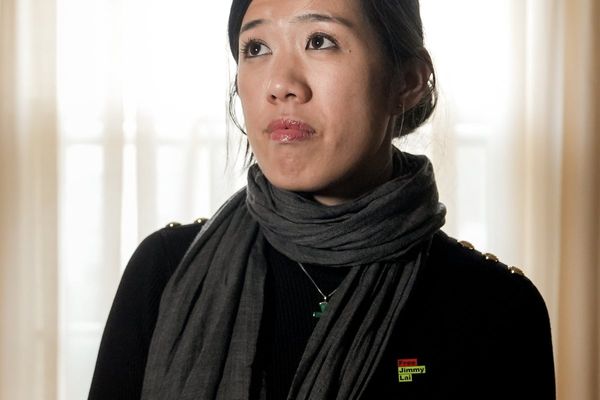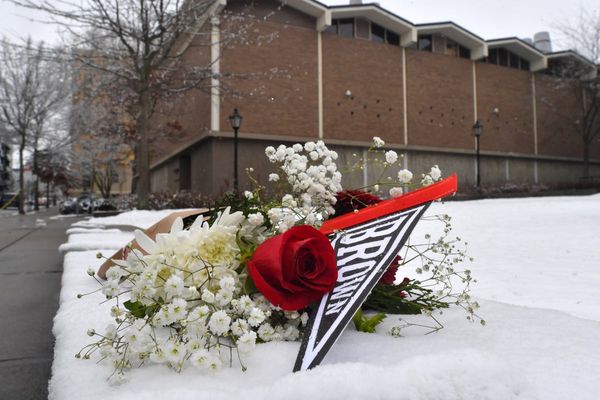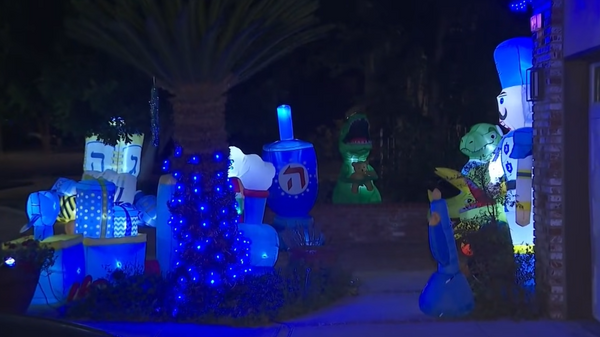
After driving for 22 hours west from Toronto along the Trans-Canada highway, University of Toronto professor Chelsea Rochman turns down an unmarked dirt track to reach Lake 378. This lake is one of 58 that are part of a “living lab” used for long-term ecological monitoring of acid rain, mercury contamination and, in Rochman’s case, microplastic pollution. After releasing tiny plastic fragments evenly across the lake, Rochman and her team investigate how they move, dissipate and affect everything from microbes to fish. Then, with a clearer picture of how these microplastics behave and affect ecosystems, more effective monitoring, risk assessment and management priorities can be informed. “There isn’t another research station like this anywhere else in the world,” says Rochman.
Special permission is granted by the government to contaminate and manipulate these lakes. Of course, any pollution is carefully contained and remediated. Scientists are under strict instructions to monitor the lake throughout the research project and ensure nothing escapes the watershed.
Periodically for the past three years, Rochman’s team has driven a boat across the lake to systematically add microplastics at concentrations equivalent to one cup of microplastics in one Olympic-sized swimming pool of water. Every mix contains three types of heavily produced or consumed plastic, each dyed a different colour so they can be traced in the environment. Based on their different densities, Rochman can predict how long these microplastics would stay in the water at various depths or how quickly they’d settle to the bottom.
Rochman explains that microplastics escape the water quickly, which suggests that environmental concentrations are only persistent due to more pollution continuously being emitted. “But if we turn off the tap and stop adding that plastic, it would wash up on beaches and sink to the sediment, then get buried over time.” While it wouldn’t disappear, it could become a legacy contaminant that doesn’t continue floating through the water system. Of course, buried microplastics could still have consequences for the microbes, animals and plants living on or in the sediment, and further research will help shed light on these interactions. “The reality is that it’s the animals that live on shorelines, in grasses and on the sediment that are most at risk,” she says.
Rochman works with other scientists and students, investigating how microplastic moves through the food web and quantifying how much accumulates inside the edible parts of fish, for example. “The mismanagement of our waste is coming back to haunt us. We see microplastics in the food we eat and in drinking water.”
As one of the world’s most cited researchers in her field, she’s passionate about making science relevant by using it to inform policy. Her previous research helped policymakers ban microbeads in the US and beyond. “There’s no point knowing all about microplastics in a lake without using it to make change. Research shouldn’t happen in a vacuum.”
With that in mind, Rochman launched the University of Toronto Trash Team, increasing waste literacy across the community. “We collaborate with local governments and businesses to trap trash and use it as monitoring data to understand sources of plastic pollution to our city. For example, we find a lot of foam and half of this plastic foam is from construction. When we install insulation foam on buildings, it can easily escape into the environment.”
One of her students, Elizabeth Stanziano, is working with two construction companies to pilot ways to capture insulation foam and develop an environmental management plan that can be shared with other companies and authorities. Currently, there’s no legal obligation for construction companies to capture the plastic pollution they release beyond the boundaries of the building site.
“Until now, this has been such an understudied but significant source of pollution,” says Stanziano. “So I’m excited that so many of our pilot partners and the people we’ve interviewed in Toronto are enthusiastic about starting to solve this problem and protect our shared local environment.”
Stanziano calculates the effectiveness of storm drain filters and other measures, such as covering dumpsters and waste-transport vehicles with a mesh cover, or attaching vacuums to tools that spread waste fragments through the air to prevent waste fragments escaping. “These solutions can be adapted for a small bathroom renovation or a large 40-storey commercial residential building, so this approach is scalable anywhere,” says Stanziano, who would like to see off-site environmental safety elevated to the same priority level as on-site safety precautions.
But these trash traps aren’t just cleanup machines. Rochman sees them as the centrepiece for raising awareness about plastic pollution, as well as measuring and collecting it. This work has evolved into an initiative called the International Trash Trap Network, which connects and provides support for hundreds of local groups around the world.
“Working with the University of Toronto Trash Team gives students something positive to do on the ground – it empowers them to see how change is made,” she says. “Sure, the issue is big and messy and frustrating, but if you can be part of the solution – like our research on the experimental lake, increasing our scientific evidence – we can at least feel empowered to make change.”
Meet the extraordinary community at the University of Toronto that’s pushing the boundaries of what’s possible







